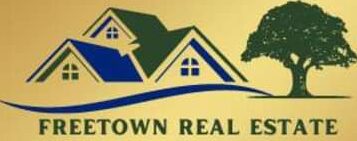The real estate sector in the United States stands as one of the largest and most dynamic industries, playing a critical role in the nation’s economic growth and stability. From residential properties to commercial spaces, real estate encompasses a vast array of assets, each with its unique dynamics, trends, and challenges. In this comprehensive exploration, we delve into the intricate workings of the US real estate business, examining its evolution, current state, and future prospects.
Historical Overview
The roots of the modern real estate industry in the US can be traced back to the early colonial period when landownership became a cornerstone of economic prosperity. Over the centuries, various factors such as urbanization, industrialization, and demographic shifts have profoundly influenced the sector’s development. The establishment of organized real estate markets, coupled with regulatory frameworks and financial innovations, has facilitated the growth of a robust industry that spans residential, commercial, and industrial segments.
Current Landscape
As of 2024, the US real estate market exhibits a mix of opportunities and challenges. The residential sector remains buoyant, fueled by low mortgage rates, demographic trends favoring homeownership, and a resilient economy. However, affordability concerns, particularly in major metropolitan areas, pose significant barriers to entry for first-time buyers. On the commercial front, the rise of e-commerce has reshaped the retail landscape, leading to a surge in demand for warehouse and distribution centers. Office space dynamics are evolving as remote work gains prominence, prompting a reassessment of workplace strategies by businesses.
Market Trends
Several key trends are shaping the trajectory of the US real estate market:
- Urbanization and Suburbanization: While urban centers continue to attract investment and development, suburban areas are experiencing a resurgence driven by factors such as affordability, space, and lifestyle preferences.
- Technology Integration: PropTech (Property Technology) innovations are revolutionizing various aspects of real estate, including property management, transactions, and market analysis. Advancements such as virtual reality tours, blockchain-based transactions, and data analytics are enhancing efficiency and transparency within the industry.
- Sustainability and ESG (Environmental, Social, and Governance): Increasing awareness of climate change and sustainability issues is driving demand for eco-friendly buildings and responsible investment practices. Developers and investors are increasingly incorporating green building standards and ESG criteria into their projects and portfolios.
- Demographic Shifts: The ageing population, millennials entering prime home-buying age, and increasing cultural diversity are influencing housing preferences and demand patterns. Multifamily developments catering to urban millennials and active adult communities for retirees are witnessing heightened interest.
Challenges
Despite its resilience, the US real estate industry faces several challenges that necessitate strategic adaptation:
- Affordability Crisis: Escalating home prices and stagnant wages have exacerbated affordability challenges, particularly for low- and middle-income households. Addressing this issue requires a multifaceted approach involving policy interventions, innovative financing solutions, and increased supply of affordable housing.
- Regulatory Uncertainty: The regulatory landscape governing real estate transactions and development varies across states and municipalities, leading to compliance complexities and legal risks for industry stakeholders. Uncertainties surrounding zoning laws, taxation policies, and environmental regulations can hinder investment and project viability.
- Economic Volatility: The cyclical nature of the real estate market renders it susceptible to economic downturns and financial shocks. Factors such as interest rate fluctuations, geopolitical instability, and market speculation can trigger price corrections, liquidity constraints, and credit tightening, impacting both investors and consumers.
Opportunities
Amidst the challenges, the US real estate sector presents numerous opportunities for innovation and growth:
- Affordable Housing Solutions: Leveraging technology, design innovation, and public-private partnerships, stakeholders can develop scalable solutions to address the affordable housing shortage. Initiatives such as mixed-income developments, micro-housing projects, and community land trusts can expand housing options for underserved populations.
- Adaptive Reuse and Redevelopment: Repurposing underutilized properties such as vacant warehouses, obsolete office buildings, and brownfield sites presents opportunities for revitalizing urban areas and meeting evolving market demands. Adaptive reuse projects not only contribute to sustainable development but also foster community engagement and cultural preservation.
- Emerging Markets and Niches: Beyond traditional asset classes, emerging real estate markets and niche segments offer attractive investment prospects. These include healthcare facilities, data centers, student housing, and senior living communities, driven by demographic trends, technological advancements, and changing consumer preferences.
The US real estate industry stands at a pivotal juncture, characterized by dynamic shifts, unprecedented challenges, and abundant opportunities. As stakeholders navigate the complexities of the market, innovation, adaptability, and collaboration will be key drivers of success. By embracing sustainability, affordability, and inclusivity, the industry can fullfill its role as a catalyst for economic growth, social equity, and community development in the years to come.






